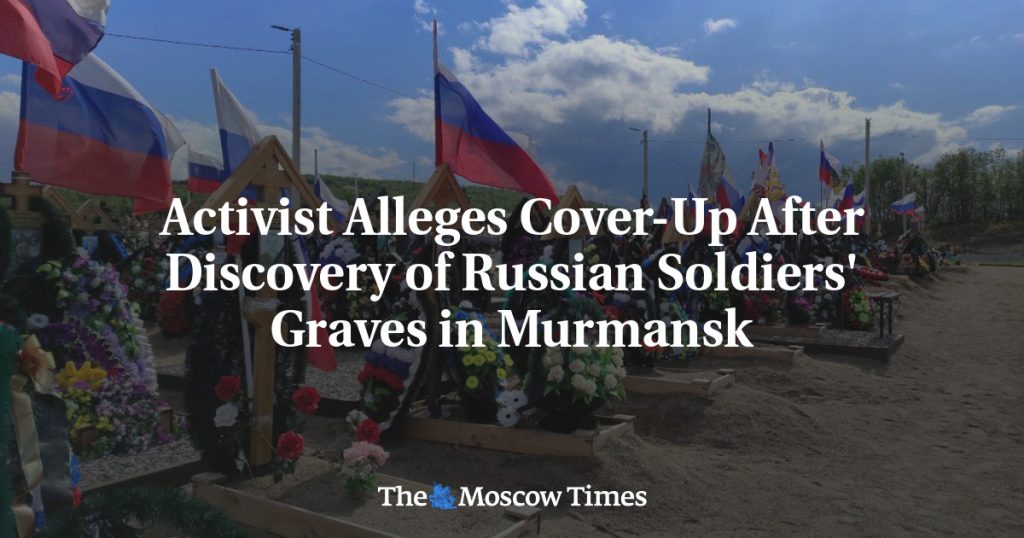The discovery of at least 165 graves of Russian soldiers in the Arctic city of Murmansk has raised concerns about the true extent of military casualties in the region. Former opposition activist Violetta Grudina revealed that the number of graves found far exceeds the figure publicly acknowledged by local authorities. Governor Andrei Chibis had only confirmed the deaths of 40 soldiers from the region at the start of the war, but Grudina’s findings suggest a much higher death toll. The graves, marked with Russian flags and military emblems, highlight the human cost of Russia’s invasion of Ukraine.
Grudina’s documentation of the 165 graves is just a fraction of the total number of soldiers who have died in the wider Murmansk region. An independent media estimate puts the figure at 317, indicating the significant impact of the conflict on the local population. The Russian Defense Ministry’s decision to stop releasing official figures on troop losses in September 2022 has led to a lack of transparency regarding military casualties. Grudina’s efforts to uncover the truth about the number of soldiers killed in action shed light on the hidden realities of war.
The discrepancy between official reports and the actual number of graves found raises questions about the government’s transparency and accountability in disclosing military casualties. Governor Chibis’ decision to stop updating the death toll and delete social media posts offering condolences to soldiers’ families suggests a lack of communication and support for those affected by the conflict. Grudina’s activism and documentation of the graves provide a valuable insight into the human cost of war and the importance of honoring and remembering those who have made the ultimate sacrifice.
The photographs shared by Grudina show rows of graves adorned with symbols of patriotism and remembrance, serving as a poignant reminder of the lives lost in the conflict. The images capture the solemnity of the cemetery, where fallen soldiers are laid to rest with dignity and respect. The sight of freshly dug graves awaiting burials underscores the ongoing impact of the war on families and communities in Murmansk, highlighting the need for recognition and commemoration of those who have died in service.
As Russia’s military death toll continues to rise, the lack of official information on troop losses has fueled speculation and uncertainty about the true scale of casualties. Grudina’s findings challenge the government’s narrative on the war and highlight the need for transparency and accountability in reporting military fatalities. By uncovering the graves of Russian soldiers in Murmansk, she has brought attention to the human toll of the conflict and the importance of honoring the memory of those who have perished. The graves serve as a powerful reminder of the sacrifices made by soldiers in the line of duty, reminding us of the ultimate price of war.


